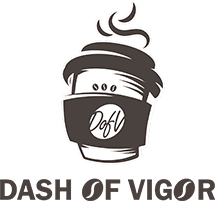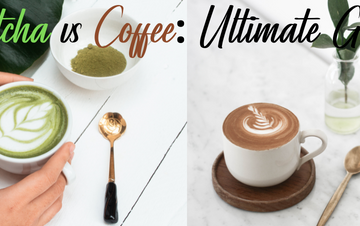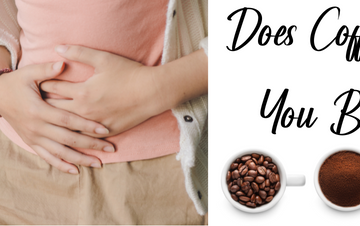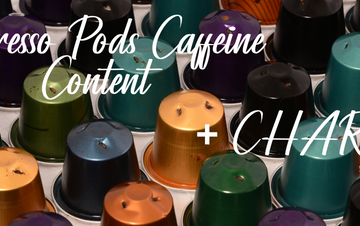Single vs Double Shot Espresso: Comparison
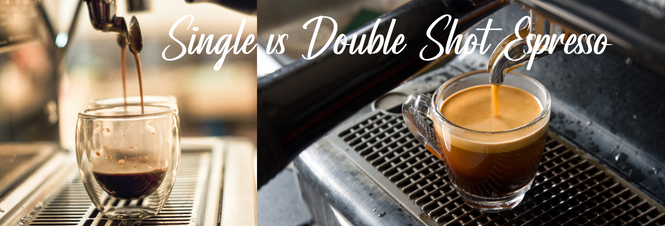
Once you have turned your regular coffee habit into a passion, you realize that exploring the world of coffee can be fascinating.
Knowing something as easy as the distinction between single vs double shot espresso will help you learn many things about coffee extraction.
“Solo” and “doppio” shots, which the Italians refer to, are essential elements of the staple drinks like espressos, lattes, americanos, and simple whites. However, are you aware of a “double” shot and how it differs from one espresso?
A single espresso shot (solo) is the equivalent of 63 mg of caffeine. However, the double espresso shot (doppio) contains twice the amount of caffeine (126 milligrams). The taste and preparation process is identical for both these shots. Also, they differ in coffee grounds used, the type of portafilter basket, and the extraction time.
I look at them more in-depth later in the article.
Let’s get started.
RELATED TOPIC: Is Espresso Bad for You?
TABLE OF CONTENTS:
- What Is An Espresso?
- What is the Difference Between Single vs Double Shot Espresso?
- Single vs Double Shots: The Reality
- Why is Brew Ratio Important?
- Single vs Double Shot Portafilter Baskets
What Is An Espresso?
Espresso is a concentrated coffee created by forcing hot boiling water under pressure through finely-ground coffee beans.
The term “espresso” refers to “pressed-out coffee” and refers to the process that pushes hot water into the grounds of the coffee. This technique is often used in coffee shops. However, you can also prepare it at home with the espresso maker.
Espresso making is easy. It’s similar regardless of whether you’re making a single shot or a series of shots. One espresso is roughly 1 ounce of coffee (29.5 milliliters). Making an ideal espresso requires the correct quantity of temperature, and pressure, ground coffee, and water.
RELATED TOPIC: Ristretto vs Espresso vs Lungo: The Difference
What is the Difference Between Single vs Double Shot Espresso?
Volume and Weight
A standard single espresso requires 7 grams of premium coffee grounds. You will likely get around 30ml espresso (or approximately 1 fluid 1 ounce).
Double espresso needs 14 grams of ground coffee and produces about 60 milliliters of coffee (or approximately 2 ounces of liquid).
In addition, the standard coffee-to-water ratio is 1:2.
Usually, when discussing the characteristics of drinks and their effects, we’ll talk about the volume.
However, in the coffee-brewing realm and more than when it comes down to espresso, the coffee enthusiasts tend to focus more on weight and not the volume.
Why is this?
Espresso usually includes a layer of crema on the surface.
The crema layer will be denser if coffee beans have just been roasted. It can make up an essential portion of the volume of your shot, but it’s not carrying many details about coffee extraction.
So, passionate baristas would use the scale of a coffee maker to gauge the yield of espresso when they pull single or double shots. So, they can achieve consistently good results.
It’s also important to note that the ratio of espresso coffee to water differs from one coffee shop to the next.
Although old espresso is prepared with 1:1 ratio, in some specialty coffee shops, the baristas make longer shots.
You are free to alter the ratio and extraction times to get the best results. You could utilize the espresso standards as your basic guidelines.
RELATED TOPIC: How Many Ounces in A Cup of Coffee?
Extraction Time
The extraction time for both is between 22 to 28 seconds.
On the taste side of things, there is no change.
The time of extraction is extremely useful in dialing the perfect solo and doppio shot.
For instance, If it takes 18 seconds to complete an entire double shot of roughly 50ml or 40 grams the coffee beans you are using may be crushed too fine.
This causes espresso that is weak and not enough extracted. If you make the correct adjustments and grind it more precisely and more finely, you can get the shot to the optimal zone of 22 to 28 seconds.
However, If you like the taste of an espresso drink that took just twenty seconds to pull, do not be concerned about the speedier draw.
There aren’t any strict rules in the world of coffee.
It’s all about flavor and personal preferences!
Single vs Double Shot Caffeine Content
The issue is the quantity of caffeine in a cup varies according to various variables, including the kind of beans used in coffee.
For instance, Robusta beans are two times more powerful than Arabica beans.
In that regard, it’s possible to conclude that a doppio espresso has more caffeine than a single. Ultimately, it’s created using twice the amount of ground coffee.
In the case of caffeine, one shot of espresso (1 ounce of liquid) can contain around 63mg milligrams of caffeine. While the double espresso shot can have around 126 mg of caffeine.
Exciting Facts for Double Espresso Shot
Weighting the espresso you drink is a relatively recent procedure. In the past 70 years or around, baristas “guesstimated” what espresso was done based on the eyes alone.
Double shots of espresso are being offered as standard in many cafes across the globe. The majority of machines are set and calibrated to make two shots.
You can be grateful to Starbucks for this!
Although they weren’t the inventors who invented the double shot, they introduced the Double Shot (doppio) in the 1990s.
Nowadays, you’ll find that most baristas who use an espresso machine pull an espresso double but will utilize an espresso portafilter split to reduce the amount of espresso if you request an espresso with a single shot.
| SINGLE VS DOUBLE ESPRESSO SHOT | SINGLE SHOT | DOUBLE SHOT |
| GROUNDED COFFEE | 7g | 14g |
| VOLUME | 25-30ml | 50-60ml (2 oz) |
| CAFFEINE | ~ 63mg | ~ 126mg |
| EXTRACTION TIME | 22 – 28 sec (+- 3 sec) | 22 – 28 sec(+- 3 sec) |
Single vs Double Shots: The Reality
In the current specialty coffee market, the espresso ratios can differ. While it wasn’t feasible before the advent of better equipment, it’s now possible for us to be more innovative in making our shots.
The classic double shot uses 14g of coffee, creating approximately 60ml espresso. It seems simple enough, but we no longer use the volume of coffee to gauge our shots.
We employ Mass (weight).
The 60ml espresso contains lots of crema, the golden-brown layer of foam on top of a well-pulled espresso shot. When you let the foam break down and then look at the liquid, it might be as much as 40-50ml espresso.
This inconsistency is why we are using scales to measure shots nowadays. We want to be exact. What’s that 60ml double shot of espresso? It’s likely to weigh between 30-40g (we’ll call it 35 for convenience).
Bring it back so that we’re at the same level:
- 14g of coffee makes 60ml espresso (2 liquid ounces) – A visual measurement
- 14g of coffee is 35 grams of espresso (1.2 mass ounces) – A scale measurement.
See? Both of these statements are true, but conveying what we are referring to is challenging. There’s a tension in communication between the old method of measuring and the more precise contemporary one.
RELATED TOPIC: Ristretto vs Long Shot Espresso: The Difference
Why is Brew Ratio Important?
The ratios of your brew are vital since they offer a method to monitor, control and, most importantly, reproduce your espresso’s taste.
The ratio of your coffee brew is essential to monitor as it will provide you with the exact recipe for extracting the ground coffee with your water.
The more pressured water pushes through your coffee grounds, the more the grounds will break down. This is referred to as extraction.
It’s a three-step process. When you increase the quantity of water used in the preparation of your espresso and the amount you extract, you will decrease the strength of your espresso because it will be less concentrated.
If you’re trying to dial in your extraction, it is vital to determine the “sweet place” between the grounded coffee and the volume of your beverage.
You’ll need to find the proper range of shots that isn’t over-extracted or too diluted, resulting in the perfect mouthfeel and taste.
Single vs Double Shot Portafilter Baskets
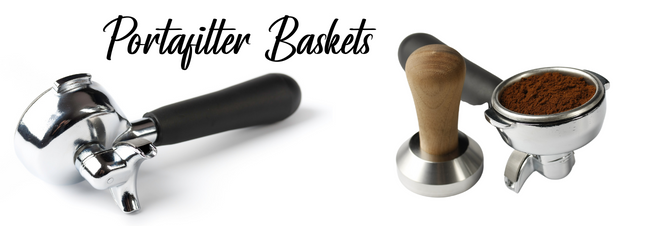
Double espresso uses the double portafilter basket.
This kind of basket usually is used to store between 14 to 18 grams of coffee ground.
A single shot may use one portafilter basket, which can hold less than 7 to 12 grams.
However, most of the time, at busy cafes and coffee shops, the single shots are created using double portafilters with two outlets.
Double shots are split into two. This lets the barista take the two shots in a single shot at once. You’d rarely see baristas using just one portafilter in a cafe. This is because dosing and tamping require more effort with the narrow-shape single basket.
It can be difficult to pinpoint when adding the ground and dispersing the grounds.
Due to the shape of a single basket, its use can result in channels and unbalanced removal, neither of which you want.
So, even if the cafe is not busy and you only order one espresso shot, the barista will likely use the double portafilter.
He’d take two single shots, then only give you one.
The other shots are consumed by employees or poured into the ice tray.
Ice Espresso can be later used to refresh beverages made of iced coffee using milk.
That’s why mochas are typically made using a double shot of espresso.
This leads to an intense coffee taste.
However, you might be trying to reduce the amount of caffeine you drink.
If so, you can request the barista to make your drink using just one espresso shot.
